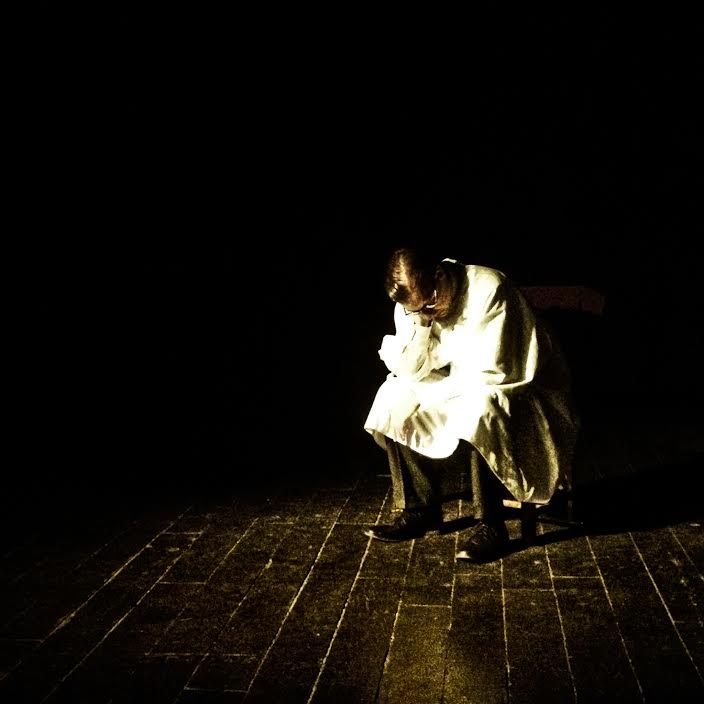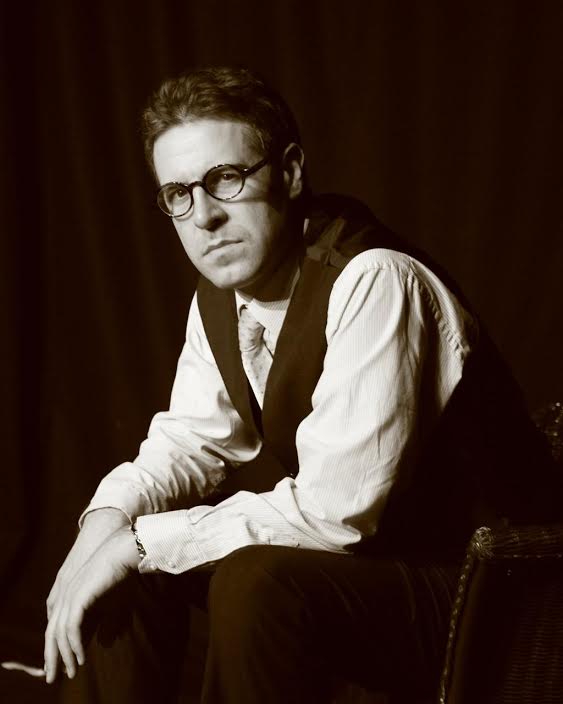In Hangover Square, The Slaves of Solitude and Twenty Thousand Streets Under The Sky Patrick Hamilton wrote three of the most engrossing novels of the mid 20th century. If you have never read them now really is an incredibly prescient time to do so, for Hamilton wrote about the lives of ordinary people, mainly Londoners, in times of great uncertainty and change, not unlike today.
I am sure though that anyone who reads them will be very aware that in order to assume the role the arch chronicler of the characters that inhabit mid-century pubs, boarding houses and tea rooms, Hamilton must have, coughs, lived a little himself.
It is an existence that is dissected in both Nigel Jones’ excellent Hamilton biography (Through A Glass Darkly) and the wonderful play The Silence of Snow which will be staged in London twice in the coming month.
It is the story of hugely gifted man who peaked a little too soon and spent the rest of his life never quite managing the comedown. For a while he was among the most celebrated novelists and playwrights of his day. Yet he was dead at just 58, the victim of the obsessions which coloured most of the best of his work.
Mark Farrelly’s play The Silence of Snow celebrates the author’s life by taking the audience of a journey that focuses on his passions, his mishaps and his addictions seen through the prism of a stint in an electro-therapy clinic where he sought to treat his alcohol addiction.
From comic escapades with unattainable women (invariably prostitutes) through to mythical drinking sessions with Fitzrovia’s most celebrated neer do wells (to saying nothing of the plots of his novels which in many ways were autobiographical) Farrelly has some incredible source material.
Yet the intensity which which he plays Hamilton, and the subtlety of the script which asks so many questions about the nature of fame, passion and whether Hamilton ultimately gave his life for his art, makes The Silence of Snow an absolute must see.
I first saw the play two year ago and it inspired me to find out so much more about Hamilton’s life.
Mark kindly agreed to answer my questions about Patrick, the play and his plans.
“The great problem with life is that you can get from one end of it to the other without ever feeling that another human being ever truly knew you. Perhaps it’s as well that they don’t”.
– Patrick Hamilton (1904 – 1962) in The Silence of Snow
Where did your passion for Patrick Hamilton come from?
I read Nigel Jones’ excellent Hamilton biography (Through A Glass Darkly) by chance in 2011. Of course the story-maker in me recognised a great dramatisable yarn. But I also saw Patrick’s life and fiction as a potent metaphor for all kinds of current and urgent dangers: relying on the ego too greatly, falling for people who are incapable of loving, not healing your childhood damage, hiding from pain by pursuing hollow things like ‘fame’, and being afraid to show your vulnerability. Needless (or possibly needful) to say, I had marched into many of those emotional booby-traps myself, and was seeking a surer path.
Which is your favourite of his novels and why?
Has to be Hangover Square. I really empathise with George Harvey Bone, and was once in an obsessive romantic mess like him. So as I turned each page I thought “There but for the grace of God went I”. It’s also startling – startling – how much humour and heart Patrick leavens this ultra-bleak story with. The way your sympathy is engendered for this man who is “battered silly by life”…unforgettable.
Why do you think he fell so out of fashion? And why do you think he undergoing such a revival now?
He fell out of fashion because every powerful artist does, from Charles Dickens to David Bowie. They spear something so viscerally true about their times, that after a while we all slope away in semi-contempt, feeling we’ve heard it all. Then, like a regretful ex-lover, we return, recognising that the artist had something necessary to say for all time, not just their own life times. There’s a line in Coward’s Hay Fever: “David’s been a good husband…but he’s wearing a bit thin now”. That’s what happens to artists over time, and if they’re any good (as Patrick assuredly is), we eventually come back to them. I think people are turning to Patrick at the moment because in a society so atomised, cold and disconnected, he’s your man. He gets it. For instance, look at how Twenty Thousand Streets Under The Sky ends: Ella quietly crying to herself. No love. No prospects. Alone. Like we all are.
Where did you get the idea for the play from? And why did you choose the electric convulsion therapy sessions as the backdrop for the monologues?
I’d wanted to make a solo play since being a teenager. I love the supreme test it presents: to hold an audience’s attention for one hour with absolutely no safety net. I also love telling a story directly to an audience’s faces, because I don’t believe in the ‘fourth wall’ in theatre, and think it’s a mistake that reveals much about our absurd determination not to communicate deeply with each other. The play is set in an electro-therapy clinic for several reasons. Firstly, it actually happened like that. Secondly, it illustrates how far gone Patrick became with booze. Thirdly, it creates a wonderful tension to hear a man speaking to you with little time left – just moments from a treatment that could destroy his brain. During the play, the lights occasionally dim to indicate that someone in the next room is having ‘The Treatment’…and of course dimming lights is my homage to Patrick’s play Gaslight.
What were your key sources for the play? Nigel Jones’s biography? His brother’s work?
Yes, both of those, and a deep-read of everything Patrick wrote. I took quite a lot of words in the script from Patrick’s fiction, but also from his beautiful letters to his brother Bruce…they reveal a lyrical, optimistic side to Patrick that you see less often in his novels. I also took some inspiration from watching Matthew Bourne’s Swan Lake. I loved the effortless flow of the piece, and thus tried to create a play that moves along with kinetic energy and rhythm – until the final moments when it all goes very silent. Hence the title: “The silence of snow” was a phrase Patrick’s wife used to describe the sudden, shocking emptiness in their house on the afternoon he died in 1962. He was 58 and had drunk himself dead on three bottles of whisky a day. Spoiler alert!
Are there any insights into his character that you have gleaned through playing him? Do you think he was ever really happy? Or did the alcohol utterly extinguish any joy he had in his life?
He was rarely happy because he was trying to grasp happiness outside of himself – in fame, money, whisky and tortured affairs. That’s a mug’s game, but he couldn’t get a grip. In that sense I have simple pity for him. He also had a very dark shadow side (we all do), which is why he was able to simultaneously write such vulnerable, decent characters, and such manipulative monsters: he was both in his time. It’s also worth remembering that his twenties were a blast! Massively rich and famous at 25, a critical and commercial success (phew!) and full of hope. It all started to sour after he was almost killed by a drunk driver in his late twenties. A cruel twist. He also struggled to adapt to not being the zeitgeist king of his early days. We all would. He chose alcohol as an anaesthetic, and my job in playing him is to elicit our understanding and sympathy for this…watching this once-great man destroy himself until he can barely speak.
Will the play be staged later in the year/next year?
The upcoming performances at the Arts Theatre, and The Bridge House in Penge, will bring me to 60 overall performances. I honestly only expected to do Edinburgh in 2014 and hopefully a short run in London after that. But on it goes, and I feel very lucky indeed that it’s having such a long life. Some great reviews have helped. I’m sure there will be some more next year. It’s just me and a wooden chair, so it travels well!
Do you think we will see revivals of Patrick’s highly acclaimed and very successful plays Rope and Gaslight? Or are they too much period pieces?
Gaslight is having a major revival early next year. Gaslight and Rope are certainly not period pieces, in the sense that they speak to us right now. They are full of terrifying, pungent insights into the seemingly limitless ways that human beings will torture the ones they love. They are also supremely well structured. Is there a better, more shocking stage thriller than Rope? None that I’m aware of. Go see!
What is next for Mark Farrelly?
I’m about to present two new plays I’ve written. One is called Howerd’s End, a two-hander exploring Frankie Howerd’s personal and professional life, to mark his centenary in March next year. We are planning to open that at the Greenwich Theatre in the spring. The other play is another solo, but one set in the near future and not dealing with a known public figure. It’s called Groundswell and is about what happens when a new anti-nuclear Prime Minister takes office – and then a nuclear bomb goes off in London. How’s that for a change of creative gear?
The Silence of Snow is at the Arts Theatre, central London, on Monday 14th November at 8pm:
https://artstheatrewestend.co.uk/whats-on/the-silence-of-snow:-the-life-of-patrick-hamilton/
…and at The Bridge House, Penge, on Saturday 19th and Sunday 20th November:
The play is published as Soho Lives: Two Solo Plays, available from markfarrelly.co.uk
Twitter: https://twitter.com/MarkFarrellyUK


